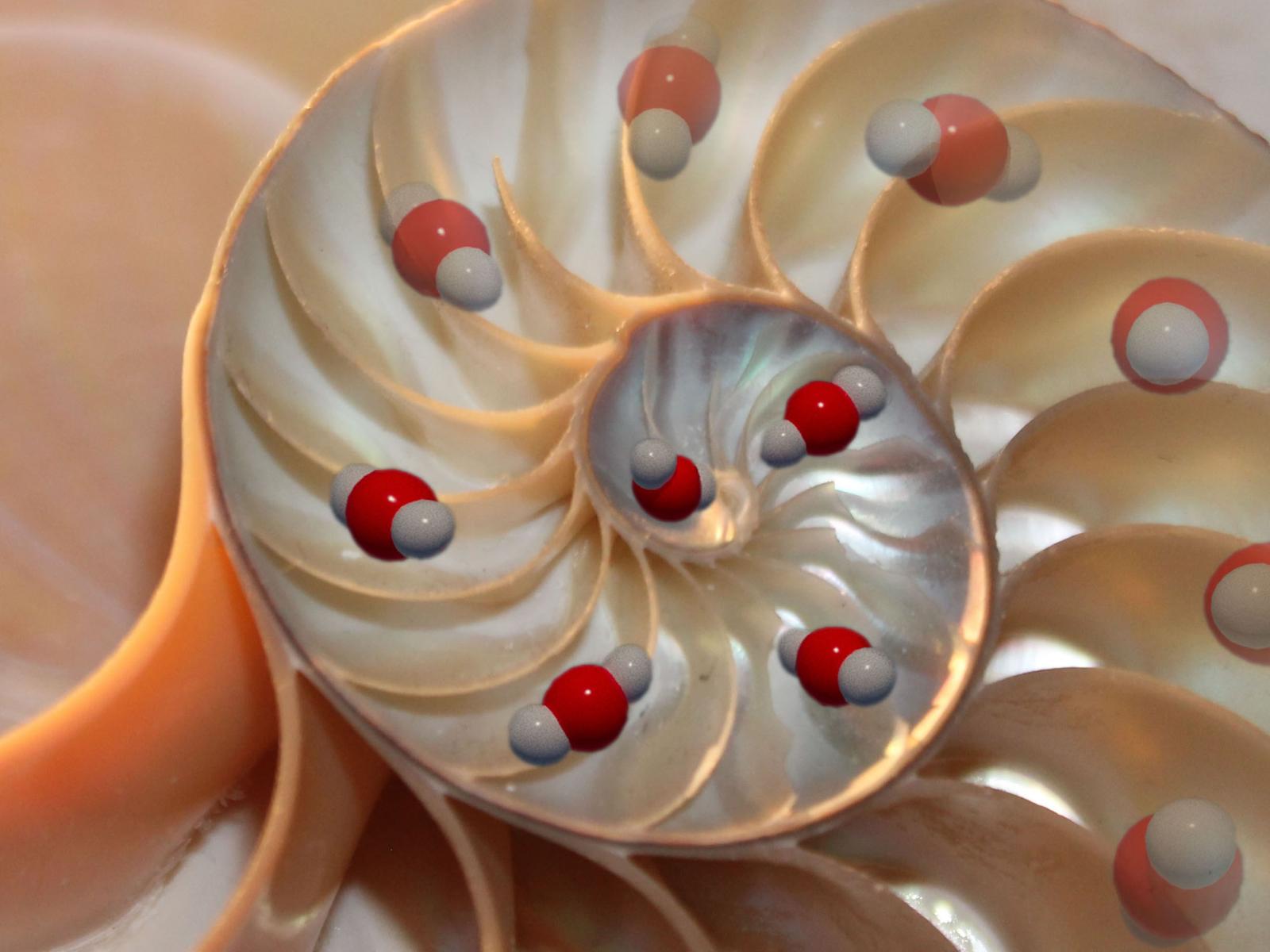Mimicking Nature to Store Carbon Dioxide in Minerals
Research will use biologically inspired materials to convert carbon dioxide into minerals

A new project will develop materials inspired by nature to turn carbon dioxide into stable minerals like those found in seashells.
(Illustration by Nathan Johnson | Pacific Northwest National Laboratory)
Reaching carbon-negative goals, like the Department of Energy’s Carbon Negative Earthshot, requires finding new ways to capture carbon from the environment and store it. One approach is to convert carbon dioxide (CO2) gas into stable solids.
A newly funded project at Pacific Northwest National Laboratory (PNNL) takes inspiration from nature to turn CO2 into minerals. Proteins within small living creatures can take CO2 and transform it into the minerals that makeup seashells, or carbonates. Led by Chun-Long Chen, PNNL materials scientist and affiliate professor of chemistry and chemical engineering at the University of Washington, researchers will develop new molecules, called peptoids, that can mimic the natural function of carbon-capture proteins.
“Peptoids are a powerful tool that allow us to combine the best of nature with innovative science,” said Chen. “We can design and tune molecules to efficiently capture and convert CO2.”
Chen and the team at PNNL have used peptoids as alternatives to proteins for bio-inspired materials synthesis. Peptoids are highly stable, tunable, and cheap to synthesize.
The project combines expertise in developing peptoids for CO2 capture and mineralization as well as understanding how minerals form and grow. A major goal is to generate fundamental knowledge about peptoid activity, leading to design principles for creating active molecules that promote the efficient conversion of atmospheric CO2 into useful carbonate materials.
Making useful minerals in the water
The work will focus on water-based systems, mimicking the marine environments where CO2 conversion naturally occurs. The peptoids will convert the CO2 and metal ions dissolved in the water into solid carbonate materials. The team will use state-of-the-art imaging techniques, coupled with theoretical simulations, to watch the solids form and understand how the peptoids promote CO2 hydration and conversion into minerals.
The team will explore the basic steps of CO2 conversion into carbonate, understanding the process at a molecular level. This detailed knowledge can help design new and more efficient peptoids that control different aspects of mineralization.
The fundamental science discoveries in this project can provide key information to help develop stable and scalable systems for removing CO2 from the atmosphere. In addition, peptoids can be used as templates to generate complex hybrid peptoid–mineral structures. This could turn CO2 into functional materials, with new and different properties.
“This project combines multiple aspects of PNNL’s materials science expertise,” said Battelle fellow and project investigator Jim De Yoreo. “It builds upon existing collaborations to push our research in new and exciting directions.”
In addition to Chen and De Yoreo, other PNNL investigators are Chris Mundy, Kevin Rosso, Wendy Shaw, Jinhui Tao, and Praveen Thallapally. Marvin J Bayro of the University of Puerto Rico is also an investigator of the project.
PNNL researchers will also play roles in other Chemical and Materials Sciences to Advance Clean Energy Technologies and Low-Carbon Manufacturing-funded projects. Sebastien Kerisit is the lead PNNL investigator for the “Geochemical Processes Controlling the Fate of Critical Elements during Carbonation of Mafic and Ultramafic Minerals” project led by Professor Young-Shin Jun at Washington University – St. Louis.
Published: September 27, 2022